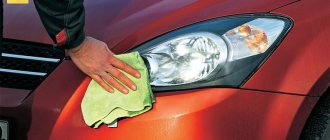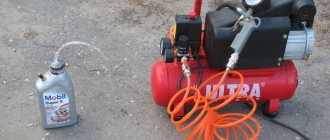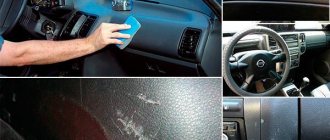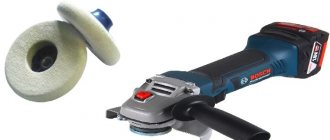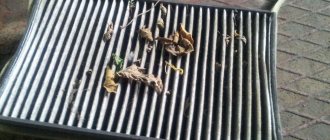Here you can buy Velcro winter tires at low prices.
. Buy summer tires at competitive prices in Krasnodar - PIN-AUTO. . Buy tires and wheels in the PIN Auto online store. It would seem that what could be simpler than a banal hand car wash? I foamed the car, let the foam work for a while, then washed the whole thing off with water, dried it dry and drove off. But that was not the case. Even specialists at detailing centers, who profess exceptionally safe and high-quality washing, disagree on how to properly wash a car. Some believe that this should be done exclusively using a high-pressure apparatus and do not accept the use of any sponges. Manual car washing involves the use of sponges or special fabrics. Others, on the contrary, say that only a two-phase wash with a sponge will help to wash the car more efficiently, while causing minimal damage to the paintwork.
But there is another religion in terms of car washing called “hand washing”. It is very difficult to find such a service at any car wash, as it takes a lot of time. Therefore, most often the manual washing method is used by those people who take care of their cars themselves, well, naturally, have some kind of yard in the country, or live in a private house. The fashion for completely manual washing most likely came from the USA, since it is the manufacturers of American automotive chemicals that have a very wide range of accessories and chemicals specifically for completely manual washing.
A do-it-yourself manual washing kit may consist of various accessories. These include special fur gloves and buckets with a double bottom. From auto chemicals, these can be pre-wash shampoos, waxes, and so on. In general, a set of equipment for self-hand washing can cost 5,000 rubles and more. At the same time, if some American consumer can afford it, then for our people, hand washing is, on the contrary, a way to save money. And no one will spend 5 – 10 – 15 thousand rubles on such equipment. Therefore, based on the experience of communicating with specialists from various detailing centers, as well as personal experience in caring for paintwork, we want to show a method for manually washing a car yourself, which will help keep the car clean and at the same time cause minimal damage to the paintwork.
What rag should you use to wash and polish your car? Everything is not as simple as it seems
In fact, the question of which cloth to use to wash and polish a car sounds somewhat incorrect, since these processes require the use of different care materials.
It’s one thing to thoroughly wash your favorite car, and quite another to polish it using various products that are available in abundance on the market as technical cosmetics. Likewise, rags for these purposes differ significantly in the tasks assigned to the owner who decided to improve the appearance of the car with his own hands. The first type comes into contact with the aquatic environment and detergents that corrode dirt. The second is with chemical compounds, the use of which requires a dry surface of the body and a soft base of a rag, also not damp. Therefore, we will proceed from these basic principles.
Make your car headlights shine
We all know that headlights in a car play one of the most important roles in vehicle safety. Accordingly, every driver is obliged to keep lighting sources clean. Poor visibility on the road due to dirty headlights is a risk of getting into an accident. That's why it's so important to clean your headlights of dirt before you hit the road.
Unfortunately, over time, the headlights begin to dim (become cloudy). To prevent this from happening, regularly clean your headlights with more than just a regular rag and water. To keep your headlights as clear and shiny as possible, use window cleaner (available at any hardware store or supermarket). Old women's tights are perfect as a polishing material; they will 100% not leave streaks or scratches on the headlight glasses.
What to wash with?
It only seems at a quick glance that no special specialized knowledge is required to wash your own car correctly from a person who has stopped using the services of a professional car wash for any reason. Every business has its own tricks and nuances, without knowledge of which the work cannot be called well-done. And among all pressing issues, the first place is occupied by the choice of tools.
Why is this happening?
It's all about the car's paintwork, which looks quite delicate. Thus, scratching it or damaging it by careless handling is a mere trifle. You've probably noticed on some cars with high mileage all sorts of tiny scratches on the varnish, if you look closely. And most likely, these are traces (in 99% of cases) from an incorrectly used rag during self-washing. How can this be avoided?
Baking soda is an excellent car cleaner.
Add 1/4 cup baking soda to a 5-quart plastic canister, then add 1/4 cup dishwashing liquid to the canister. Next, fill the canister with water almost to the top. Screw the cap onto the canister and shake well.
See also: How to properly use anti-rain on car windows?
Store the prepared cleaner concentrate for later use. When it's time to wash the car, shake the canister well again and pour a glass of concentrate, mixing it with 8-10 liters of water. Fill a bucket with warm water and mix in a homemade cleaning solution that you can use to wash your car.
Rag, brush or sponge?
If you choose a sponge, then it should be specialized for use on cars. These are usually sold in markets or parts stores and are made of foam rubber with large grains and holes. A characteristic difference from a regular dishwasher or bath sponge, for example, is that large pores are able to absorb sand and dirt, keeping them from rubbing over the surface of the car’s paintwork. This prevents minor scratches from occurring.
It is not recommended to use a brush, even the softest one, to wash the body (especially of new cars). It is best suited for washing wheels or protecting them where there is no specific varnish, like in auto body parts. But a combined sponge-brush made on a microfiber basis is quite suitable for the body, especially in combination with a good technical shampoo.
As for the rag, some professional washers say: no rag is suitable for washing more or less quality, since any fabric is not able to absorb large volumes of water (like sponges or fibers)! Perhaps their opinion is worth listening to. But here are the very extreme options that can still be used with some difficulty: soft rags made of natural cotton with small additions of synthetics, old terry towels. But still, in order not to cause harm, it is better to avoid it.
But for final care after washing, a rag is a nice thing. Microfiber or suede, it will collect residual drops of water from the surface of the body, preventing the appearance of unsightly stains and streaks.
Do not wash your car in the heat when the body is hot
“Washing a car when it is too hot, for example immediately after driving it or when it has been parked in direct sunlight, can lead to the formation of soap spots and deposits,” warns expert Anton Steganov, director of a car wash in Krasnodar.
What to polish with?
It is definitely better to polish the paintwork with a cloth. But which one is best to choose? Here is a step-by-step master class from a person who regularly uses a polish like Turtle Vox (colloquially known as “turtle”).
Take a small soft cotton rag. Pour a circle of polish onto the body, approximately 2 cm in diameter. We begin to rub using a cloth. Each spot is rubbed approximately 30-50 cm in diameter. So we go over the entire surface.
When the ground polish dries (10-15 minutes), we begin the final polishing with a flannel collected into a small lump (it must be constantly turned). You can also use a suede cloth, for example. The entire process of double processing with smoke breaks will take no more than an hour, and with a certain skill you can complete it in half an hour. But the car sparkles so much that you can look like in a mirror!
And a few more tips
for novice polishers who have already figured out which cloth to use to wash and polish the car. It is better to carry out all work with gloves to avoid contact of the chemical with the skin. And some polishes can leave peculiar marks on rubber and plastic parts. So you need to try to avoid getting chemicals on these parts of your car.
How to wash your car yourself from a bucket?
To do this you will need:
- Latex gloves;
- Clean bucket (preferably 2);
- Pure water;
- 2 clean sponges;
- Car shampoo;
- Clean rag. A rag is needed to remove residual moisture after washing. A microfiber cloth or so-called “rubber cloth” is best; it comes in a yellow plastic case.
It is advisable to have access to plenty of water. There is no need to save on water; if there is little of it, it is better to refrain from washing yourself for now. There is no need to be lazy about going out to collect water in a bucket.
- First of all, you need to wet the car without touching it.
- Pour 2-3 buckets of water onto the body, paying more attention to particularly dirty areas.
- Then dilute car shampoo in a bucket according to the instructions written on the bottle.
- Next, we apply foamed car shampoo from a bucket onto the wet body using a sponge in the following order: roof, windows, hood and trunk, headlights and taillights, left and right sides. When applying car shampoo, do not press too hard on the sponge. Having touched the body, lightly press and run the sponge over the surface, squeeze the brush, smoothly squeezing the sponge. Attention should be paid to all places, including wheels and arches. After covering the car with car shampoo foam from a bucket, it is advisable to wait 10-15 minutes while the chemistry works with the dirt. It's time to have a smoke.
After a smoke break, the car shampoo must be washed off.
- Don’t rush to wash your car with a bucket right away, running the sponge over the dirty surface. First you need to pour a couple of buckets onto the body. Thus, we will wash off the top layer of coarse dirt that the car shampoo has dissolved.
- After this, you need to rinse the shampoo bucket thoroughly and wash off the remaining dirt with clean water and a separate clean sponge. During the process, you can already rub the surface with a sponge, since the small particles of dirt that scratch the paintwork were dissolved by the car shampoo, and you washed them off by pouring a couple of buckets onto the car. There is no need to spare water and you should wash the car with a bucket in the same order, starting from the roof.
- At the end of this process, it is very advisable not to be lazy and once again spray the car with water from a bucket, because microparticles may still remain on the surface. Then we take a clean cloth and wipe the moisture from the body, leaving no streaks.
As you can see, washing a car yourself is a slightly labor-intensive process, but it’s free. You just need to spend a little on auto chemicals. A bottle of car shampoo is enough for several car washes, and its price averages from 200 rubles.
It is important! When regularly washing your car yourself, be sure to polish the body once a season.
Helpful advice:
Try not to wash your car in the courtyard of high-rise buildings and on the banks of water bodies. This is prohibited by Russian law. It is better to wash your car yourself in private yards.
How not to take care of the body: TOP 10 mistakes
An article about how to and how not to care for a car body. Useful tips and valuable recommendations. At the end of the article there is a video about car body care.
Contents of the article, how not to care for the car body:
- A dry rag is the enemy of everything
- Not all rags are created equal
- Rub cleanly, or license plate disease
- Household chemicals and cars
- Saving on care
- Old stains
- Hot shower
- Dampness in the cabin
- Chips and cracks
- Scrapers and brushes
- Video - useful tips for car body care
A dry rag is the enemy of everything
Often in the life of drivers the following situation arises: there is an urgent need to wipe off dirt from the headlights, glass or body surface, but all that is left in the trunk is an ancient, worn-out dusty rag. Well, where to go - there is nothing else, you have to rub with what you have. We did this once, twice, three times... And then, while washing, we suddenly noticed a lot of scratches. Where do they come from?
- A dry rag contains a huge number of small grains of sand. When a surface is rubbed, it simulates the action of fine-grit sandpaper. Even if the fabric was initially clean, when it comes into contact with dirt and dust, it immediately acquires a grinding effect and severely scratches any surface.
The glass becomes cloudy when frequently wiped dry, which impairs the driver's visibility. The reason here may be not only a rag, but also cleaning the dust with dry wipers.
The plastic of the headlights also loses its transparency and prevents the lights from shining at full strength.
- Well, it’s scary to imagine what’s going on with the paint layer of the body. The surface is covered with numerous scratches, the color fades and takes on a very “worn” appearance.
- Never wipe car surfaces with dry rags or sponges;
- If you urgently need to wash the glass or headlights, then wet the dusty surface, wait until the dirt gets wet, and only then carefully wipe with a damp cloth, napkin or wipers;
- The paintwork needs delicate cleaning, so it is better to wash it according to the rules with plenty of water.
What can I recommend:
Unusual but working lifehacks that will help clean your car.
For many of us, the process of washing a car is something special and even sacred. Some people prefer to pay money by washing their car at a car wash. Some people like to do it themselves, not trusting their car to other people. But no matter who washes your car, many car enthusiasts are always interested in various tips and life hacks for car washing, many of which can really make the process of cleaning your car from dirt easier.
There is a huge amount of similar advice. Today we present to you the most unusual and strange life hacks that, surprisingly, really work.
Not all rags are created equal
At first glance, what difference does it make what you use to wash your car? Look, there are old leggings lying around idle in the garage - cut them into pieces and let them do some good. Yes, many people think so, and in vain:
- Regular rags, sponges and towels can, of course, clean a car, but they are not designed for gentle cleaning due to their structure.
The mud layer on the surface of the car consists of microsand grains. Ordinary rags are unable to “absorb” dust granules. They simply spread the stain over the car and scratch the coating.
For safe washing, you should use special car sponges that have a very soft surface and large grain size. Large pores attract dirt and do not polish the paintwork and car windows. In addition, such a sponge is easy to wash and does not accumulate grains of sand.
Before you start scrubbing your car, you need to knock off the main layer of dirt from it with water pressure. Only after this can you apply shampoo and use a sponge.
To prevent sand from the bucket from ending up on the surface of the body again, there is a special grid - a separator. This is a plastic mesh that separates the bottom of the bucket with accumulated dirt from the top with clean water.
Shampoo, gloves and glasses
The DIY hand wash kit consists of several accessories. These are rubber gloves, two buckets with a grated platform, new sponges, rags, car shampoo and a garden sprayer. Some drivers, instead of specialized car shampoo, use household products such as soap, hygiene products, bath foam, etc. They can knock down dust, but are not suitable for thorough cleaning.
They do not contain special surfactants designed to clean and protect paintwork. In addition, their foam does not stick to the car and runs off.
Car shampoos are much more effective. In addition to surfactants, there are chemical inclusions that hold the chemical foam in a dense layer on the body for five or more minutes.
The choice of shampoos is large, there are environmentally friendly ones, with active foam, for manual and contactless washing. The main difference between them is the strength of action. Eco-shampoos will not harm the skin, and not a single blade of grass will be harmed at the dacha. Active foam, on the other hand, chemically removes contaminants, so it is more “strong.”
But before washing, you need to carefully read the label and choose a product specifically for hand washing.
Rag versus Karcher. How to wash your car more efficiently?
Rub cleanly, or license plate disease
All car enthusiasts know how difficult it is to pick out the corpses of stuck insects from the front bumper. And it’s so difficult to wash off their dried traces that it can take more than one hour.
State license plates are no exception; they are also susceptible to complex contamination. But you shouldn’t rub them with all your might. The fact is that black paint on numbers and letters is not always able to withstand the powerful pressure of a rag. Over time, it may completely disappear, and then you will have to duplicate the number.
Naturally, there can be no dry wiping here unless you want to be left without state marks.
Household chemicals and cars
On the Internet you can find a bunch of tips on how to wash your car with dish soap, clean the interior with carpet cleaner, and the like. The recommendations are mainly that these products wash better than special automotive ones. This may be true, but, for example, toilet fluid also cleans perfectly, but no one would even think of washing their hands with it instead of soap.
- Household chemicals sometimes do a better job of removing various contaminants, but they are not good for car coatings. Too aggressive reagents corrode the paint layer, can ruin the upholstery and melt the rubber inserts.
Popular questions and answers
How can you save on washing?
A self-service car wash opens up enormous savings opportunities for thrifty motorists. Moreover, you can save money both by refusing additional options and by rationalizing the process itself. And if the first path is quite simple, then the second will require some skills.
You won't lose much if you don't use wax. Moreover, in some situations it is not even needed, because the negligence of the express wash will be preserved by the silicone film, and then you will have to make additional efforts to correct them. Drying can be replaced with a suede rag. You just drive out of the box, take out the fabric and run it over the entire body. For the same reason, you can skip osmosis, because suede will remove water stains.
If you are not too concerned about the condition of the paintwork of the “steel horse,” then you can safely use guns with a brush - dirt can be knocked off with them much faster, and this is an additional saving of money.
Finally, don’t forget (if they don’t accept cards) to change your money into small bills or coins. For information on how you can save money with them, see life hacks.
Is this kind of washing different in winter and summer?
While washing a car at a self-service car wash in summer is quite simple, in winter this procedure becomes somewhat different. Firstly, regular shampoo (and “chemicals” under pressure) begins to freeze literally 10-15 seconds after it gets on the body, which means it’s more difficult to wash it off. Secondly, the water itself (if it is not distillate) also freezes very quickly on the paintwork. Finally, the procedure itself becomes not very pleasant for the motorist, because it is very easy to get your shoes or trousers wet at a self-service car wash, but drying them out is no longer as easy as in the summer.
Technically, self-service car washes can operate even when the air temperature drops to -20 degrees. This is achieved thanks to constant auto-circulation of water through pipes and heated floors. Another question: is it worth washing your car this way in cold weather? Traditional car washes are still preferable with a big “minus” overboard.
What are the pros and cons of this type of washing?
Pros; Cons
Self-service car wash is cheaper; Queues are a fairly common occurrence. Each station is equipped with all the equipment for a full wash with many options; Out of habit, instead of saving, you can spend a comparable, or even more, amount than at a regular car wash. Contactless washing does not cause damage to the paintwork; Car wash owners often cheat, by diluting the “chemistry”, after which it copes worse with dirt 24-hour work; The probability of staining clothes is extremely high; You can learn how to wash your car well; It is almost impossible to get advice at a self-service car wash; In winter, the washing process becomes very complicated
How to check a car before buying
Have you decided to buy a car, but don’t have enough money for a new one? Then you'll have to take a closer look at a used one. In order not to encounter problems after the purchase, you need to carefully check it, both technically and legally, before the transaction
How do you prefer to wash your car? Why? Share in the comments:
- Movie
- Entertainment
- Technologies
- Personal finance
- Unified State Exam
- Online test
- Recipes
- Tips for parents
Special projects
- Sanatoriums in Russia and Belarus
- What is healthy lifestyle really?
CALENDAR
- Horoscopes
- Holiday calendar
- Gift ideas
- Congratulations
Saving on care
Okay, we figured out that you need to use specialized car cosmetics. But now you go to a store where there are several products of different price categories. What will you choose - the cheapest?
- The main goal of automotive chemicals is to cleanse old dirt and protect against new dirt. There are also compositions for leveling the coating against microcracks.
A quality product should do its job well and leave an unnoticeable layer on the surface to reduce dust sticking.
Use feminine pads to clean your windshield
What could be worse when your car suddenly runs out of windshield washer fluid while driving in bad weather? Or, for example, when driving on the highway, the pump in the washer reservoir failed or the reservoir itself began to leak. In this case, you will have to constantly stop and clean the windshield manually. If you have feminine sanitary pads with you, the process of manually cleaning your windshield will become much easier.
See also: 19 Ways to Use Super Glue You've Never Tried (But Should!)
If not, we recommend throwing a pack of gaskets in the trunk. Who knows, maybe someday it will come in handy for cleaning glass. Especially if you plan to travel far. The gaskets will not only absorb dirt and water well, but will also help remove stains from the glass.
Old stains
Every housewife knows that stains need to be washed and washed as early as possible, without allowing them to become embedded in the material. The car in this case is no different:
- The worst contaminants for a car are those that can damage the paint layer or other surfaces. They need to be washed off immediately. The list of dangerous stains includes stains from various juices, sodas and other oxidizing drinks.
Traces from insects and bird droppings can sometimes corrode any coating, and even more so paint.
Bitumen also needs quick cleaning, otherwise over time it will be strongly absorbed into the pores of the surface and will cause a lot of trouble for those who want to wash it.
Scrapers and brushes
Winter is coming, and cars will inevitably be covered with a layer of snow and ice. Almost everyone will have shovels, long brushes and special glass scrapers in their trunk. It is absolutely clear that without these tools it is impossible to move from one place, but are they used correctly?
- Hard bristles scratch the car body with strong pressure, so try to brush off only the top layer of snow deposits without touching the car.
The scraper can be used only after the glass has warmed up and the ice begins to come off on its own, otherwise you will get scratches. And the force applied to remove ice can lead to the glass cracking and crumbling.
The same applies to the work of the wipers. Wait until the ice melts, and only then turn it on.
Proper care of your car is the key to its long service life. If you follow the basic tips, you can take care of the cleanliness and condition of your car yourself. Just don’t forget that this needs to be done in specially designated areas equipped with drainage systems and cleaning systems. Someone also needs to take care of nature.
Video - useful tips for car body care:

